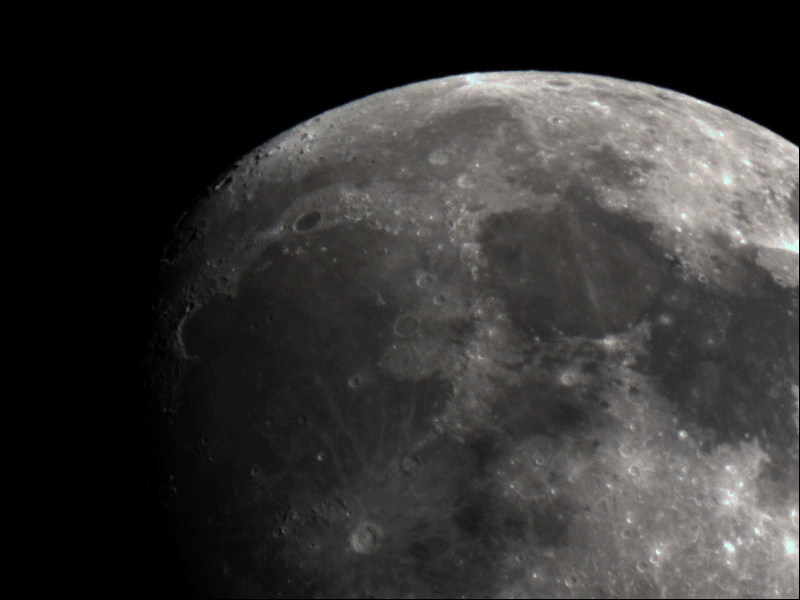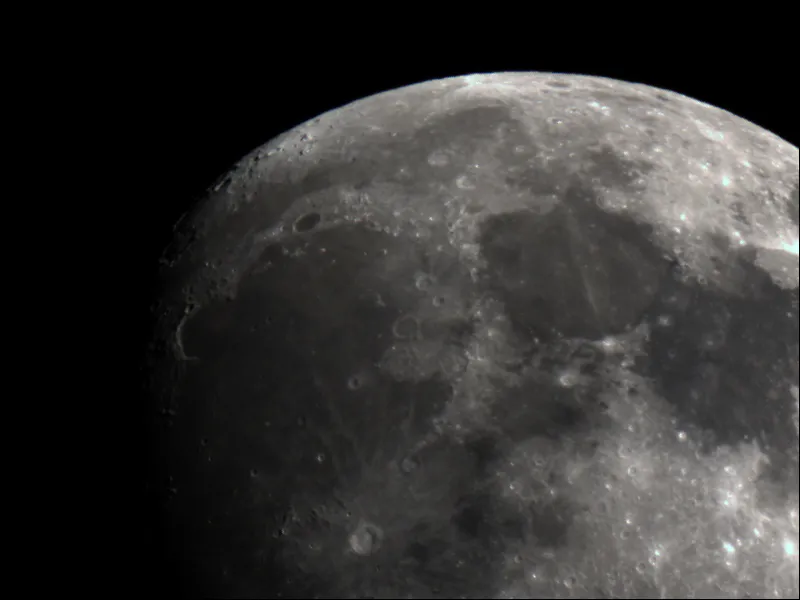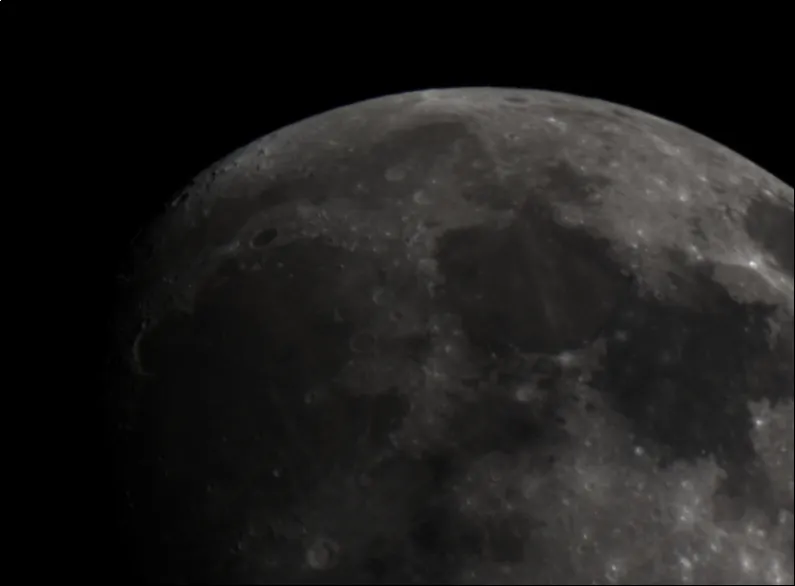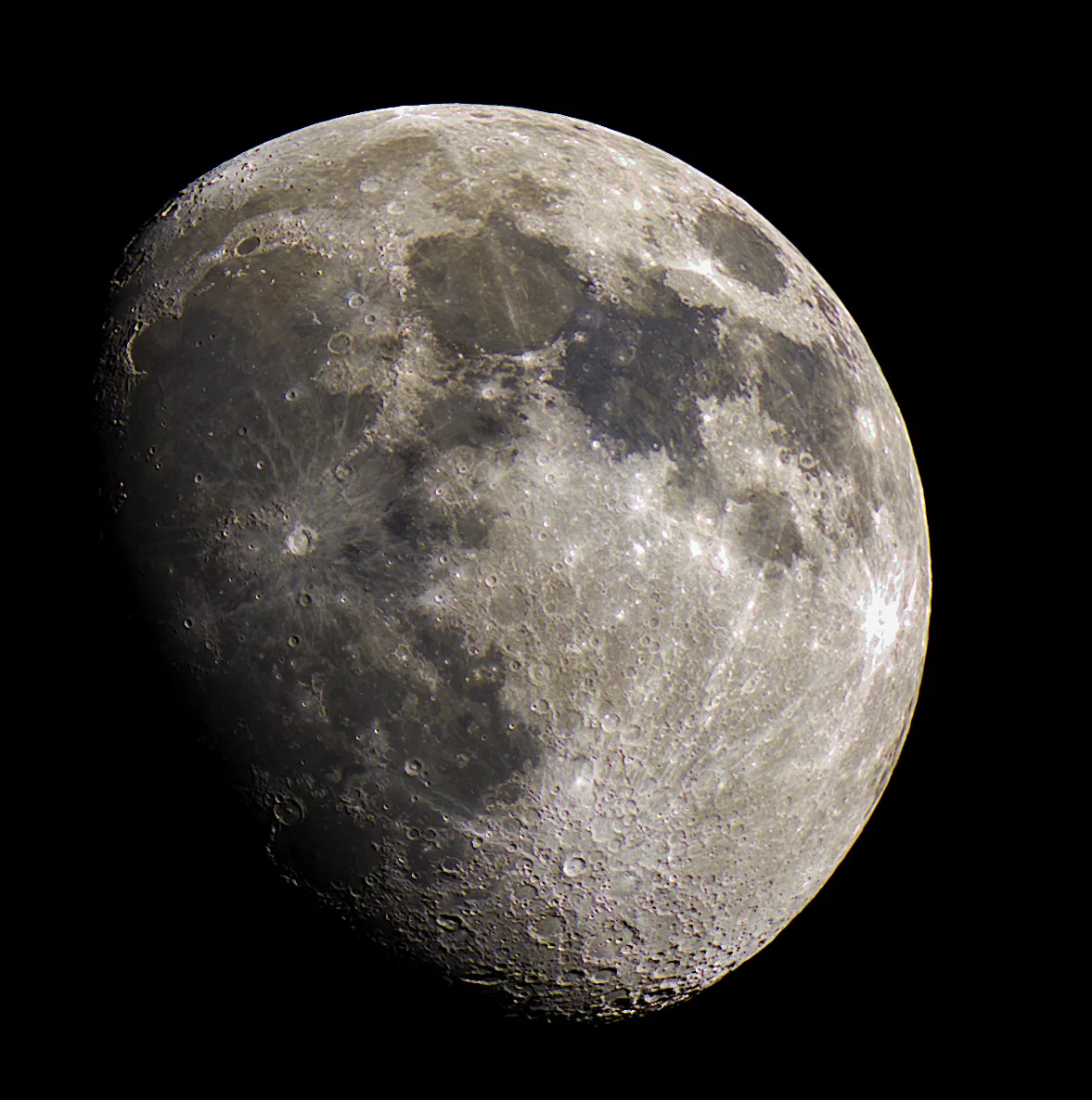Hey dear steemians,
I have tried to take a picture of the moon with my small telescope and my guiding cam. This was some experimental, to test a different approach of the recording and to see what the QHY5L-IIC can afford.
There was something ingenuity required to get into focus with the small camera on the telescope. I had to extend the focuser by about 3cm.
This photo was taken by taking a lot of pictures, which are saved as a video. Due to the small chip of the guiding camera, the whole moon did not fit in one picture despite the low focal length of my telescope. So I had to create a mosaic of five panels. For each panel I have taken 5000 images, so all in all, I have made 25000 images of the moon.
Due to the high dynamic range of the moon and the small dynamics of the sensor, I had the problem that there are many burnt out spots, although the dark spots are still very dark. You can see that on the right side in particular.
This animated gif shows some frames from one of the five panel-videos. As you see, even at a relatively short focal length of 420 mm, the air agitation let the moon wobbling a lot.

This image is just a screenshot out of the video.

This image shows the same panel after stacking. As you can see, it is still very dim and blurry, and it looks even worse than a single frame at the first view. But thanks to the stacking, the sharpness, and the contrast can be worked out very well.

Details of the picture that was captured by me
The picture was taken from my backyard with the following settings and following equipment.
Light frames where captured as uncompressed AVI video with 5000 frames for each of the five panels. For stacking, I have used the 60% best images.
Camera: QHY5L-IIC
Scope: TSAPO65Q · 420mm · f6.5
Mount: Bresser EXOS-2 Goto
All was controlled from my Laptop.
Software: EZPlanetary, AviStack 2.0, Photoshop CC
Thank you very much for visiting and reading!
I hope that this has been a useful article for you. If you have any questions or suggestions, please don't be afraid to let me know of anything you thought about this post!
Yours,
@astrophoto.kevin
All images, otherwise clearly indicated, in this post are my own work.
You can use it for free if you credit them to @astrophoto.kevin.
